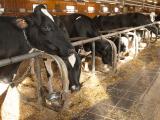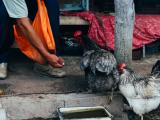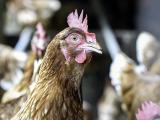Jan 5, 2012 (CIDRAP News) – The World Health Organization (WHO) today announced the deaths of two men from H5N1 avian influenza, one from Egypt and another from China whose death was reported earlier in the media.
The patient from Egypt, a 42-year-old from Menofia governorate, got sick on Dec 16 and was admitted to a hospital in critical condition and treated with oseltamivir (Tamiflu) on Dec 21, the WHO said in a statement. The man died the next day, raising Egypt's official H5N1 infection total to 157 and the number of deaths from the disease to 55.
Of those, 38 cases and 15 deaths occurred in 2011.
Egypt's Central Public Health Laboratories confirmed the H5N1 virus on Dec 24. An investigation into the man's illness revealed that he had been exposed to sick and dead poultry, according to the WHO report.
The man from China, a 39-year-old from Shenzhen in Guangdong province, came down with flu symptoms on Dec 21 and was hospitalized in critical condition on Dec 25. He died on Dec 31, pushing China's WHO-confirmed H5N1 cases to 41 and its deaths from the virus to 27. His H5N1 case and death, however, are the country's first in 2011.
Guangdong lab officials diagnosed the man's infection on Dec 30, and the Chinese government lab confirmed it the following day, the WHO reported. Earlier media reports suggested the man had no known exposure to live poultry, and the WHO said an investigation into his exposure to the virus is ongoing. Health authorities are monitoring his close contacts, and so far all are well, according to the WHO.
The two infections and deaths push the WHO global H5N1 count to 576 cases and 339 deaths. According to WHO records, the number of H5N1 cases and deaths reported in 2011 so far are modestly higher than 2010 (60 cases versus 48, and 33 deaths versus 24).
In a related development, the European Centre for Disease Prevention and Control (ECDC) today issued a rapid risk assessment regarding China's H5N1 fatality, based on a request from the European Commission.
The ECDC said the case is not part of a cluster and that the virus that infected the man is closely related to strains recently found in Hong Kong's wild birds. The findings suggest the patient was infected from an avian source rather than a human one.
Sporadic human infections in countries where the virus is endemic in birds aren't unexpected, and the latest Chinese case doesn't change the risk to human health, which for EU countries is very low, the ECDC report said.
Meanwhile, South Korean officials yesterday advised people traveling to China to take precautions, based on the man's H5N1 infection, Chosun Ilbo, a newspaper based in Seoul, reported today. The Korea Centers for Disease Control and Prevention has also stepped up monitoring of travelers arriving from China by checking their body temperatures and having them fill out questionnaires.
See also:
Jan 5 WHO statement on Egyptian case
Jan 5 WHO statement on Chinese case
Jan 5 ECDC risk assessment
Jan 5 Chosun Ilbo story
Dec 21 WHO global H5N1 case count (does not include the two recent cases and deaths)
















